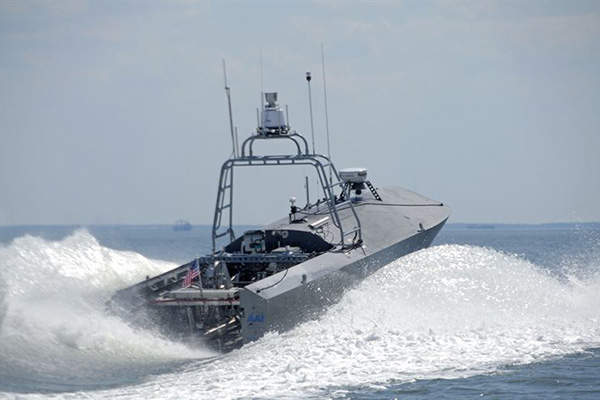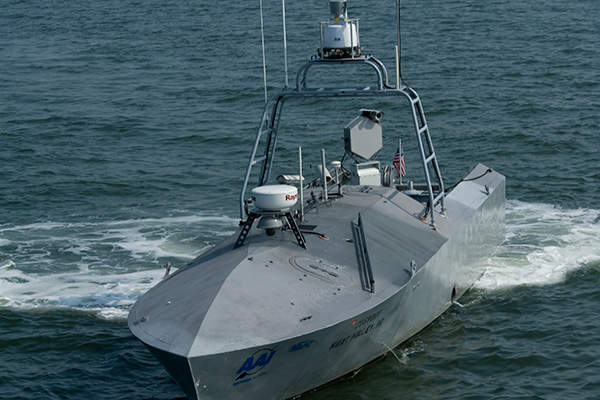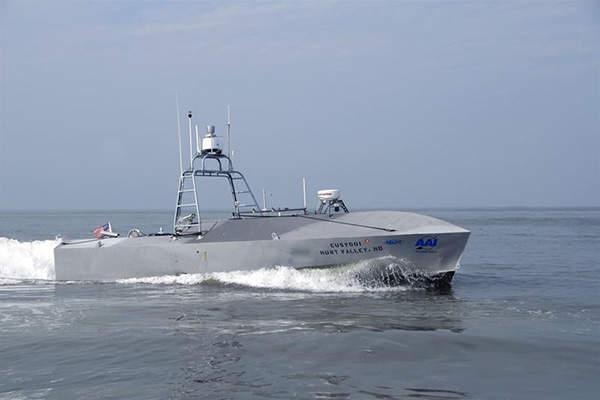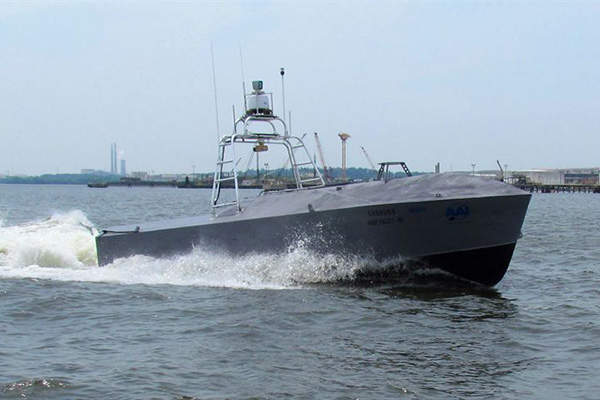Fleet-class Common Unmanned Surface Vessel (CUSV) is a fourth-generation USV developed by Textron Systems Advanced Systems and AAI Unmanned Aircraft Systems with the support of Maritime Applied Physics Corp (MAPC).
The CUSV can be deployed from Freedom and Independence-class littoral combat ships (LCS) to execute a range of missions that include mine warfare, anti-submarine warfare, communications relay, intelligence, surveillance and reconnaissance (ISR), anti-surface warfare, and UAS / UUV launch and recovery operations.
The vessel has completed more than 1,800 hours of in-water operation as of October 2014.
CUSV development
Textron demonstrated sliding autonomy capabilities of the enhanced Fleet-class CUSV during the US Navy Fleet Forces Command’s fleet experiment, Trident Warrior 2011. The vessel successfully performed collaborative unmanned mine-hunting and mine-neutralisation capabilities during the Trident Warrior 2012 experiment. The second enhanced unmanned vessel completed in-water demonstration in New Orleans in April 2012.
Textron received a $33.8m contract from the US Navy in October 2014 to provide a CUSV for the Unmanned Influence Sweep System (UISS) programme. The contract requires Textron to design, develop and qualify the UISS and its common command and control software under 30-month engineering, manufacturing and development (EMD) phase.
General Dynamics Robotic Systems (GDRS) was also awarded an $8.5m contract by the US Navy Space and Naval Warfare Systems Center (SPAWAR) in May 2006 to design and integrate two USVs for the LCS anti-submarine warfare mission module. GDRS received a $12.7m contract for four USVs in October 2006. The first Fleet-class ASW USV (11MUC0601) was delivered in May 2008 and the second vessel was delivered in mid-2008.
Design and features of the Fleet-class CUSV
The purpose-built CUSV features a modular, open architecture design that incorporates commercial, off-the-shelf (COTS) components. The optimised hull structure offers reduced drag and increased strength.
The unmanned vessel has self righting capability and offers high maintainability, as well as reliability. It is equipped with an autonomous launch, tow and recovery system. It is compatible with both LCS configurations, with a length of 39ft, a beam of 10.25ft, draft of 2.2ft and towing capacity of 5,000lb at speeds of 10k.
Payloads of Fleet-class Common Unmanned Surface Vessel
The Common Unmanned Surface Vessel is equipped with a large, versatile payload bay, which is 14ft-long, 6ft-wide and 3.5ft-high. The payload bay can be integrated with side-scan sonar, intelligence, surveillance and reconnaissance (ISR) payload, mine neutralisation module, and non-lethal weapons. A camera / radar mast is fitted to provide improved surveillance and target acquisition.
The CUSV system also includes KVH TracPhone V7 satellite communications, autonomous maritime navigation equipment and retractable antennae. The payload bay can be reconfigured with a variety of interchangeable payloads to meet multiple mission needs.
CUSV control station
The Fleet-class CUSV is controlled by a single operator from a maritime common command and control system developed by AAI Unmanned Aircraft Systems. The system is compatible with Harris SeaLancet long-range data link, which enables transmission of payload data between the vessel and the control station.
The control system is compliant with Nato Standardization Agreement (STANAG) 4586, as well as the Joint Architecture for Unmanned Systems (JAUS) protocol.
CUSV performance
The improved propulsion systems provide the CUSV a top speed of around 28k, with a cruising range of 1,200nm. It is capable of executing missions for more than 24 hours. The propulsion systems also provide superior stability in adverse weather and conditions up to sea state 4.
Global Naval Surface Combatants and Warfare Systems Market 2011-2021
This project forms part of our recent analysis and forecasts of the global Naval Surface Combatants & Warfare Systems market available from our business information platform Strategic Defence Intelligence. For more information click here or contact us: EMEA: +44 20 7936 6783; Americas: +1 415 439 4914; Asia Pacific: +61 2 9947 9709 or via email.







